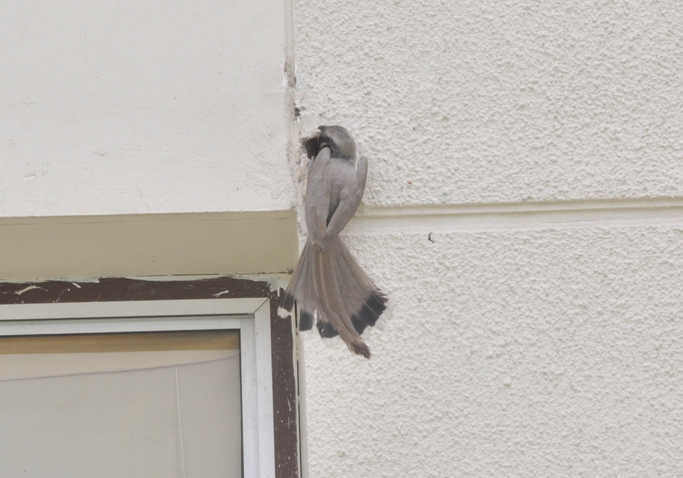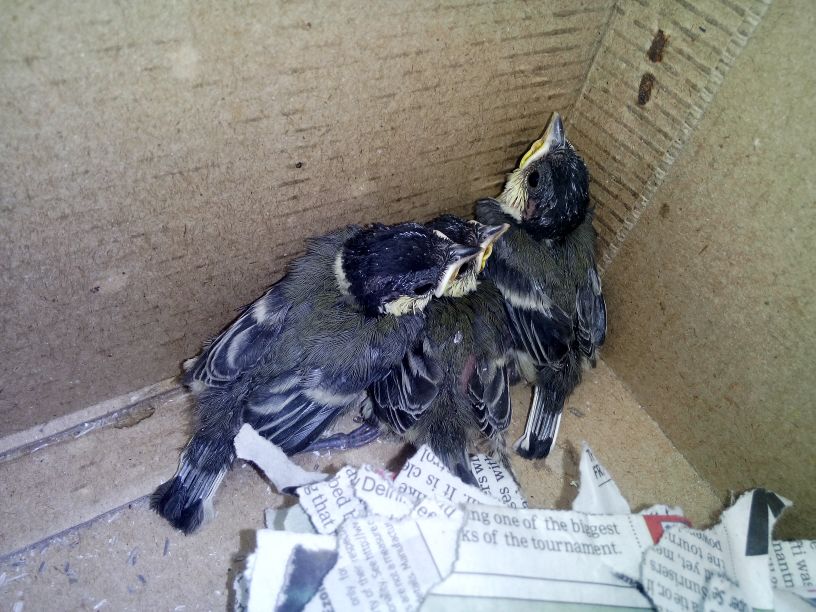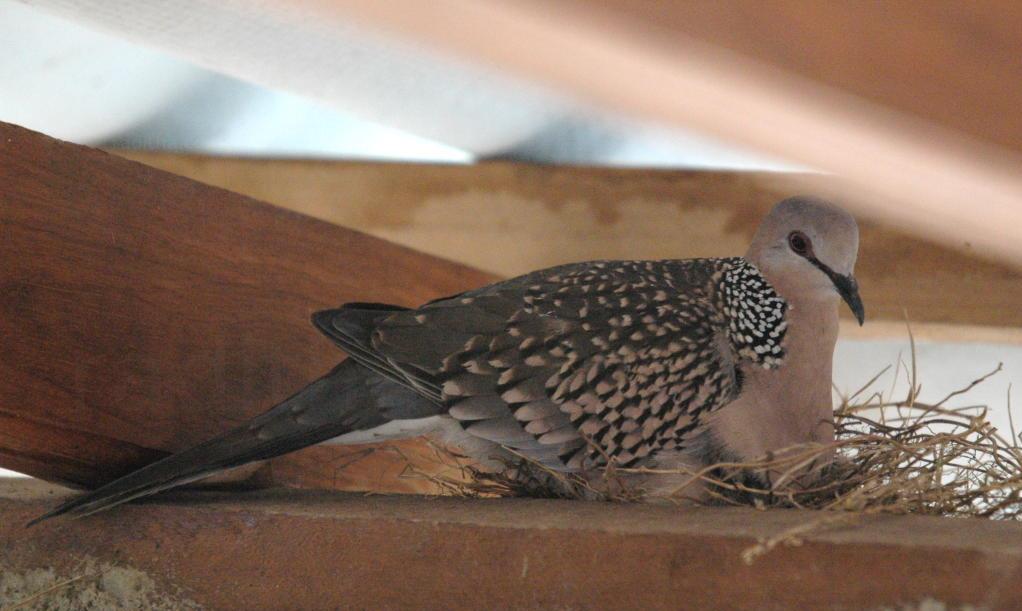5 Beautiful Bird Nesting Stories from India that Show the Humane Side of Humans
Human-wildlife conflict generally indicates a negative impact on either humans or the wildlife concerned. There are, however, many instances of humans and creatures from the animal kingdom coexisting in the same environment, with each making adjustments to accommodate the other.

Human-wildlife conflict generally indicates a negative impact on either humans or the wildlife concerned. There are, however, many instances of humans and creatures from the animal kingdom co-existing in the same environment, with each making adjustments to accommodate the other.
Birds are extremely fragile creatures and their deserting an area indicates the region is inhospitable. However, if birds are willing to nest in a particular area, this indicates they are comfortable cohabiting with other creatures there.
Here are five interesting stories of humans showing kindness and compassion towards birds nesting in their domain.
1. The Hornbill episode
Ajay Gadikar is a keen bird watcher from Indore who photographs birds whenever he gets time off from his busy IT work. His friend noticed an Indian Grey Hornbill (Ocyceros Birostris) showing interest in a crack in a building and pointed it out to him.
“On seeing for myself, I realized the little crack had a beak sticking out from it. The bird outside was flitting around, feeding his mate, who had sealed herself inside the crevice,” he says.

Photo credit : Ajay Gadikar
This pair of hornbills was nesting in a crevice of a building.”We kept a watch on them for a couple of weeks till we saw the female break out of her nest, followed by her little chicks,” he says.
Hornbills usually nest in the hollows of trees. The female seals herself, leaving just a thin slit for the beak to get out, so she can receive food from the male. She lays her eggs inside the hollow, waits till they hatch, and leaves the nest only after the chicks are old enough to fly out. All along, the male keeps feeding her and the little ones.
2. The Robin’s tale
Another interesting nesting activity was noticed by Shirish Kumar Patil, a nature lover from Amaravati, who took a video and uploaded it on YouTube. A neighbor’s motorcycle was parked outside their building and a couple of Indian Robin’s (Saxicoloides Fulicatus) decided to build their nest between the handlebars and the headlight of the vehicle.
“The bike was unused for a few days as my neighbour was out of town. When he came back and found there was a nest with eggs behind the headlight, he decided to leave his bike undisturbed till the chicks hatched and left the nest,” says Shirish.

Video credit : Shirish Kumar Patil
It took a few days for the eggs to hatch and then the parents spent a lot of time feeding their little ones. A couple of weeks later, when the chicks were grown up enough, the parents escorted them out of their motorcycle home.
Indian Robins usually nest in between rocks, in holes in walls or in tree hollows. Both parents feed their young till they are grown up enough to leave the nest.
3. A titbit about the Grey Tit
One night, after a heavy storm in Palampur, we heard chirping below our staircase and when we went down we noticed the electricity junction box door was open and little chicks, along with their nest, had fallen on the floor. A pair of Grey Tit’s (Parus cinereus) had just lost their home.
For the next one week, a shoe box was their home and we set ourselves into a routine of placing it on the terrace parapet wall every morning. All through the day, the chicks were fed by their parents and in the evening we would move the box into the house.
The chicks grew up fast and when the parents found they were old enough to fly out, they escorted their four chicks out of the shoe box, one at a time.

Photo credit: Aparna Menon
Grey Tit’s usually nest in holes in trees, between rocks or stones on walls. The female usually builds the nest and makes it comfortable for her eggs and the chicks. The parents look after their chicks till they are old enough to fly.
4. Spotting the Spotted Dove family
A pair of Spotted Dove’s (spilopelia chinensis) built their nest on the rafts in the verandah of a school in Secunderabad, where Usha Gopinath used to teach.
“It was interesting to watch the couple come and go with twigs, leaves and feathers in their beaks. Though the nook they chose was very high up, one could easily make out their home had absolutely no aesthetic sense.”

Spotted Dove in a nest on the rafts
Photo for representation only: www.photos.raditha.com
Soon the eggs were laid and the birds took turns to sit in their nest. Around two weeks later, the schoolchildren were thrilled to hear the shrill cries of the chicks.
“It’s amazing how children have so much respect for nature. Whenever the bird parents would come with food, the children would make sure they did not more around in the verandah, lest they disturb the birds. During those two weeks the children were very well behaved and usually were silent when the little chicks chirped” observes Usha.
Spotted Doves belong to the family of pigeons. They usually build their untidy nests in a safe place on the ground.
5. Peas for these Peafowl
Aman Somal lives on a farm close to Jammu where forest fires are very common in summer. After one of these fires settled down, the family found two eggs under a burnt bush. They picked up the eggs and placed along with the eggs of their hen, hoping they would hatch too.
“One morning, to our surprise, all the eggs hatched. We now had six lemon yellow chicks and two brown peafowl chicks. It was a treat to see all the little chicks eating together and sleeping huddled up close to the mother hen,” she says.

Photo credit: Aparna Menon
“Our little peafowl chicks grew very fast. Within three months they were as large as the hen. Their favorite place was outside the kitchen where they were sure to get cut vegetables and the peas that they loved to eat. At night they would roost on one of the trees near the house,” adds Aman.
Five months later, since there was no color change in the feathers, they were convinced both were peahens. The two of them would spend a lot of time trying to follow the calls of the other peafowls in the area but would come back to roost on their favourite tree every night. Finally, one evening, they did not return.
Peafowl are polygamous. The generally build their nests on the ground. The female incubates the eggs for almost a month before the chicks are born.
Like this story? Or have something to share? Write to us: [email protected], or connect with us on Facebook and Twitter (@thebetterindia).
If you found our stories insightful, informative, or even just enjoyable, we invite you to consider making a voluntary payment to support the work we do at The Better India. Your contribution helps us continue producing quality content that educates, inspires, and drives positive change.
Choose one of the payment options below for your contribution-
By paying for the stories you value, you directly contribute to sustaining our efforts focused on making a difference in the world. Together, let’s ensure that impactful stories continue to be told and shared, enriching lives and communities alike.
Thank you for your support. Here are some frequently asked questions you might find helpful to know why you are contributing?


This story made me
-
97
-
121
-
89
-
167











